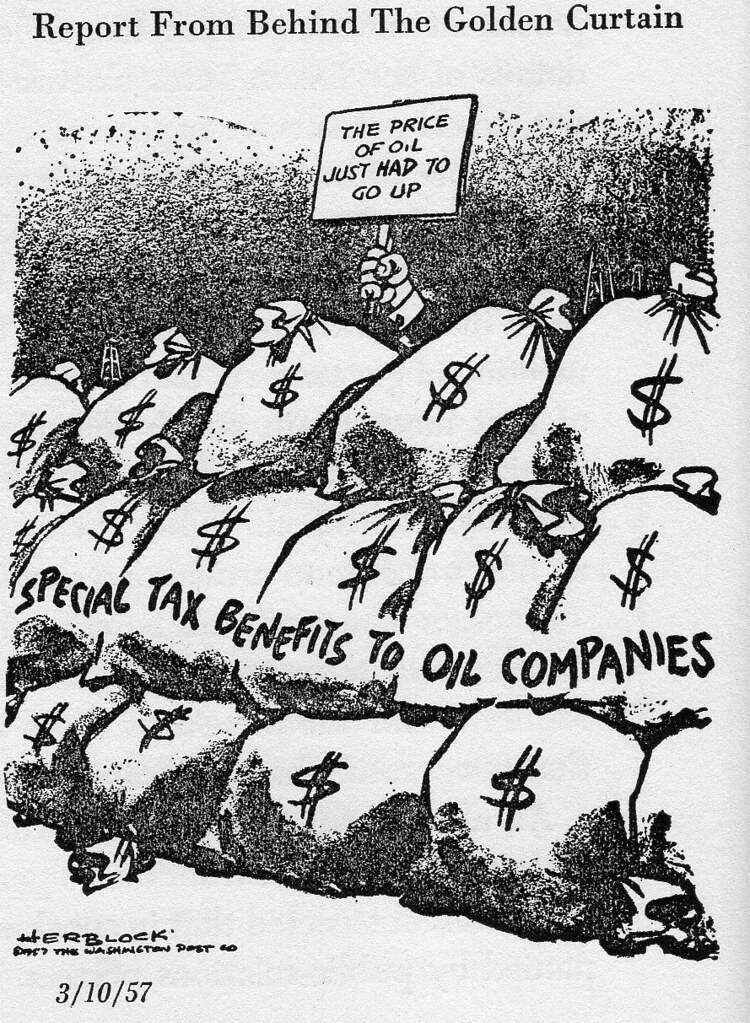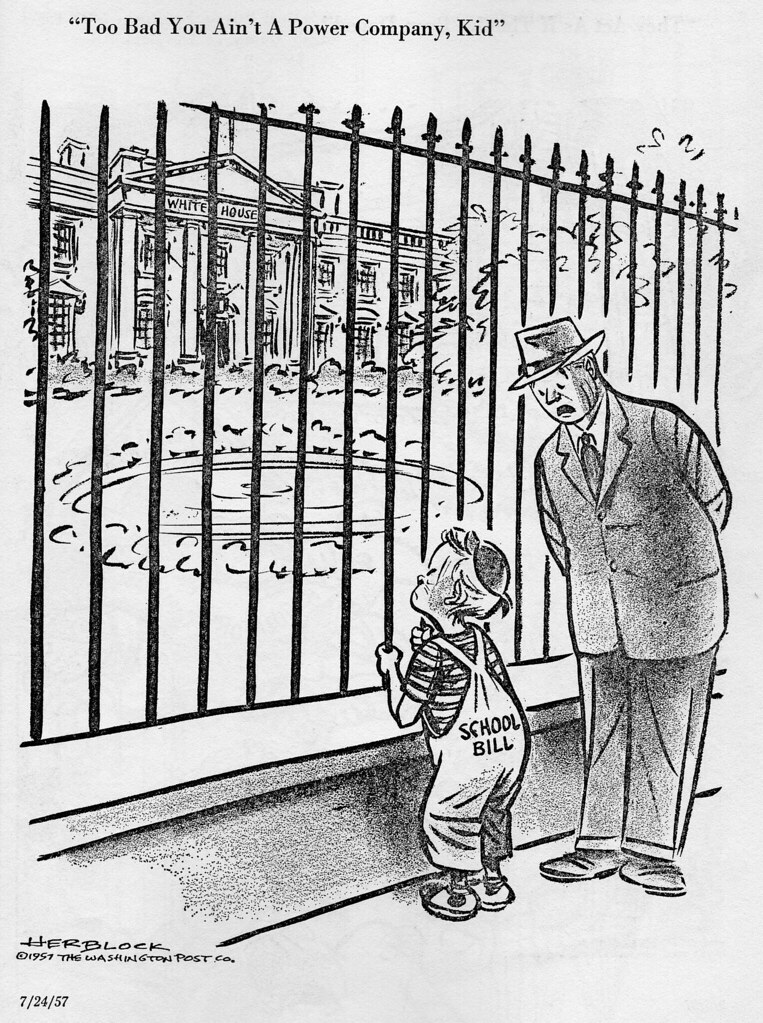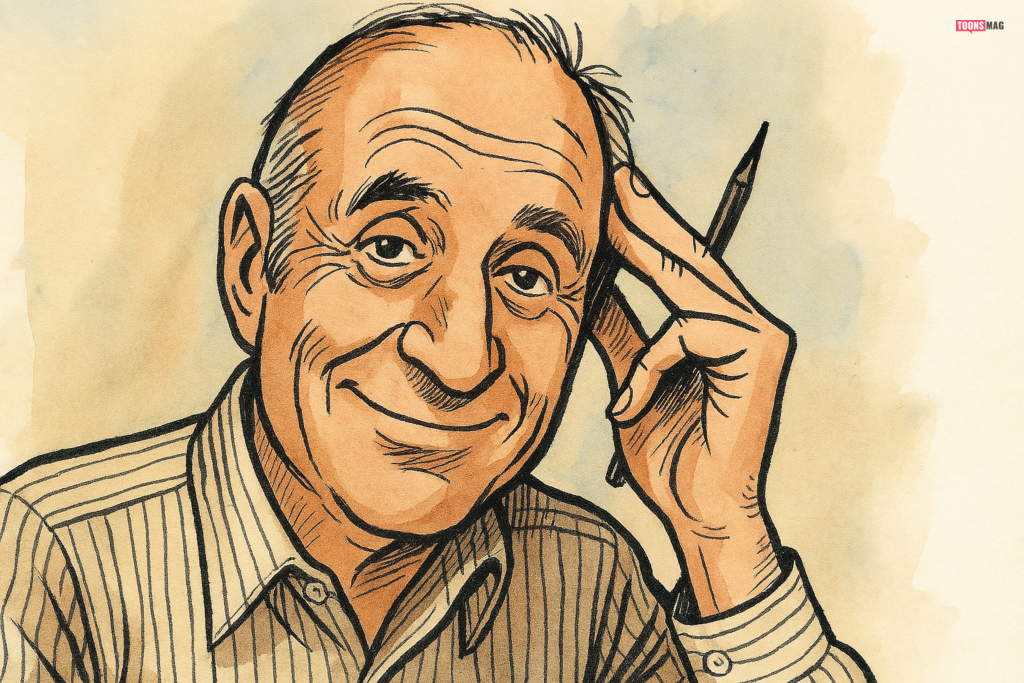The American newspaper cartoonist Herbert Block (born 1909), better known as Herblock, was concerned with civil liberties and the attacks on them by demagogues and dishonest politicians.
Herblock (Herbert L. Block)
Full Name: Herbert Lawrence Block
Born: October 13, 1909
Died: October 7, 2001
Nationality: American
Occupation: Political Cartoonist
Notable Works: Editorial cartoons in The Washington Post
Awards: Three Pulitzer Prizes
Known For: Influential political cartoons with a sharp wit
Signature Style: Simple line drawings with powerful messages
Biography: Herbert L. Block, known as Herblock, was a renowned American political cartoonist. He is best known for his editorial cartoons published in The Washington Post, where he worked for over five decades. Herblock’s cartoons tackled important political and social issues of his time, often with biting satire and commentary. He received three Pulitzer Prizes during his career, and his work continues to be celebrated for its wit and impact.

Herbert Block
Herbert Block was born on October 13, 1909, in Chicago, Illinois. His pen name, Herblock, was suggested to him by his father David Julian, a chemist. His brother William, who was his earliest mentor and also active in journalism, induced him to enter that field.
Block’s first books were dedicated to “Bill …, one of the best reporters in Chicago’s newspaper history.” His mother was Tessie, née Lupe. Endowed with a natural gift for drawing, he perfected it by attending the Chicago Art Institute part-time; he also obtained a good general education at nearby Lake Forest College (1927-1929).
When only 19 Herblock began his career as a journalist with the position of an editorial cartoonist on the Chicago Daily News (1929-1933). He then moved to the Newspaper Enterprise Association (NEA) in Cleveland, Ohio, where his personal opinions, as always, guided his drawings toward a definite idea, which disturbed some of the management. As he explained, the NEA grew “really jittery about my cartoons because they were afraid that if a client canceled the cartoon they’d cancel the whole service. So it got to be a tussle at NEA.”
The job ended when he joined the Army Information and Education Division (1943-1945), where he rose to the rank of sergeant. After discharge, he accepted the job of an editorial cartoonist on the Washington Post, where he found editorial views compatible with his own and management that did not become “jittery.”
His cartoons were distributed by the Hall Syndicate and in the early 1950s appeared in 200 periodicals from Washington to Bangkok, including the Manchester Guardian and the Economist (London).
Herblock’s cartoons were expressions of his concern for the human condition. He was a tireless searcher for truth and for the documents required to discover it. His cartoons were generally a product of this search. As he stated, “I’ve often summed up the essential role of the political cartoonist as being that of the kid in the Hans Christian Anderson story who says, ‘The emperor has no clothes on.”‘
The truth emerged as Block saw it. He told Time, “My cartoons are opinion pieces and are recognized as such.” Lowell Mellet, reviewing his work in the New Republic, observed that Herblock “sees things in a way that never would occur to anybody else…. He is truly a great cartoonist. He makes some people laugh. He makes some people swear. He makes everybody think.”

In this light, understandably, he produced many cartoons that attacked governmental policies intended to keep documents hidden from public scrutiny. It is important to remember that Herblock was still in the early years of his career when the Cold War broke out in the late 1940s and during its most tense phase in the 1950s.
In his view, far too many lower and medium level bureaucrats exercised their power to classify documents. Worse, they acted irresponsibly and capriciously, locking away information that had nothing to do with national security. They intended, rather, to remove from view data that would reveal wrong-doing and downright dishonesty in government.
Numerous cartoons displayed the hostility of bureaucrats toward scientists, intellectuals, and even fellow civil servants who dared to raise their voices against the system. Careers of truly patriotic persons were ruined during this period.

It was the parading of false patriotism that particularly aroused him. He attained the height of his critical powers during the years when Joseph McCarthy was rampantly accusing persons in and out of the government of communist sympathies or, worse, of being agents of the Soviet Union.
To symbolize this dishonesty, Block displayed Senator McCarthy as an unshaven mud-slinger, smearing innocent people with unproven accusations dragged up from the sewer or garbage cans. He was convinced that the Federal Bureau of Investigation was involved in these violations of civil rights and wrote, “If the last refuge of a scoundrel is patriotism, apparently the final inner sanctum of that refuge, for those who have made a racket of anti-communism, is the FBI.”
He was equally convinced that McCarthy personified a dangerous current of the times, enjoying wide support. “No demagogue,” he wrote, “is an island of mud unto himself.”

From the later 1950s, Richard Nixon became the chief villain. To journalists and politicians who showed the only complacency to Nixon, and who excused him by trying to hold to middle-of-the-road politics, he affirmed, “I don’t know what’s so fascinating about the ‘middle of the road,’ but for a lot of people this position has the kind of magnetic attraction that a coffee cup has for cigarette ashes; and it’s regarded as the ideal place to dump any kind of decision…. In a choice between right or wrong, I think something better than a middle-of-the-road policy is needed.”
President Eisenhower held that position, and in Block’s cartoons, he is consistently depicted as a weak, ineffective politician, the unwitting partner of Richard Nixon. The cartoonist brought to light dishonest deals carried on by Nixon long before the Watergate scandal.
Block served the public well and he was widely honored: National Headliners’ Club awards, 1940 and 1976; Pulitzer prizes in cartooning, 1942, 1954, and 1979; Heywood Broun Award from the American Newspaper Guild, 1949; Sigma Delta Chi (national journalism society) awards, 1949, 1950, 1952, and 1957; Sidney Hillman Award, 1953; Reuben Award (National Cartoonists Society), 1957; LL.D. from Lake Forest College, 1957, and Rutgers University, 1963; Parents’ Magazine award for service to education, 1958; Lauterbach award for defending civil liberties, 1959;

F. Lasker Award of New York Civil Liberties Union, 1960; distinguished service in journalism award of The University of Missouri, 1961; Golden Key Award, 1963; Capital Press Club Award, 1963; Bill of Rights Day Award, 1966; L.H.D. from Williams College (1969), Haverford College (1977), and University of Maryland (1977); Power of Print Award, 1977, and Fourth Estate Award, 1977, from National Press Club; American Cancer Society citation, 1979; Overseas Press Club citation, 1979 and 1994; human relations award from The National Education Association, 1979; World Hunger Media Award, 1984; Good Guy Award, National Woman’s Political Caucus, 1989; Exceptional Merit Media Award, 1990; and the Thomas NastAward, Overseas Press Club, 1995.
Block’s books reproduced his cartoons and their captions and provide a more extensive commentary on his times. They put his cartoons in their historical setting. He sometimes wondered whether, given the menace of the atomic bomb, there would be any historians in the future— even any future. If there are, they will find in these works an invaluable commentary on Block’s times.
Read also: The Political Satire of Herblock: Cartooning for Social Change and Editorial Cartoons and Their Role in Social Justice Movements
Frequently Asked Questions (FAQ) About Herblock
Who is Herblock?
Herblock, short for Herbert Lawrence Block, was a renowned American editorial cartoonist. He is best known for his influential and thought-provoking political cartoons.
When and where was Herblock born?
Herblock was born on October 13, 1909, in Chicago, Illinois, USA.
When did Herblock start his career as a cartoonist?
Herblock began his career as a cartoonist in 1929 when the Chicago Daily News hired him.
What is Herblock most famous for?
Herblock is most famous for his editorial cartoons, often tackling political and social issues. He strongly advocated for civil rights, free speech, and democracy.
Did Herblock win any awards for his work?
Herblock received numerous awards during his career, including three Pulitzer Prizes for Editorial Cartooning (1942, 1954, and 1979).
What major historical events did Herblock cover in his cartoons?
Herblock’s cartoons covered many historical events, including World War II, the civil rights movement, the Cold War, and various presidential administrations.
Did Herblock have a distinctive drawing style?
Yes, Herblock was known for his simple yet powerful drawing style. He often used caricatures and symbolism to convey his messages.
How long did Herblock work as a cartoonist?
Herblock had a remarkably long career as a cartoonist for over seven decades. He continued to produce cartoons until his retirement in 2001.
What impact did Herblock’s cartoons have on society?
Herblock’s cartoons had a significant impact on public opinion and policy. His work was instrumental in shaping public discourse and influencing political decisions.
Where can I view Herblock’s cartoons today?
Herblock’s cartoons are archived and can be viewed at various institutions, including the Library of Congress. Many collections of his work are also available in books and online.
Was Herblock involved in any advocacy work?
Yes, Herblock was a strong advocate for free expression and the First Amendment. He also actively supported civil rights causes through his cartoons.
Did Herblock’s cartoons ever face censorship or controversy?
Some of Herblock’s cartoons faced controversy and censorship, particularly during political tension and the Red Scare era.
What is Herblock’s legacy?
Herblock’s legacy is a testament to the power of political cartoons in shaping public opinion. His work inspires cartoonists and is a historical record of 20th-century American politics.
Are there any books or documentaries about Herblock?
Yes, several books and documentaries explore Herblock’s life and work. They offer valuable insights into his contributions to journalism and cartooning.
How can I learn more about Herblock’s cartoons and their historical context?
You can learn more about Herblock by studying his cartoons, reading biographies and analyses of his work, and exploring resources available at libraries and online archives.
This post was created with our nice and easy submission form. Create your post!





One Comment